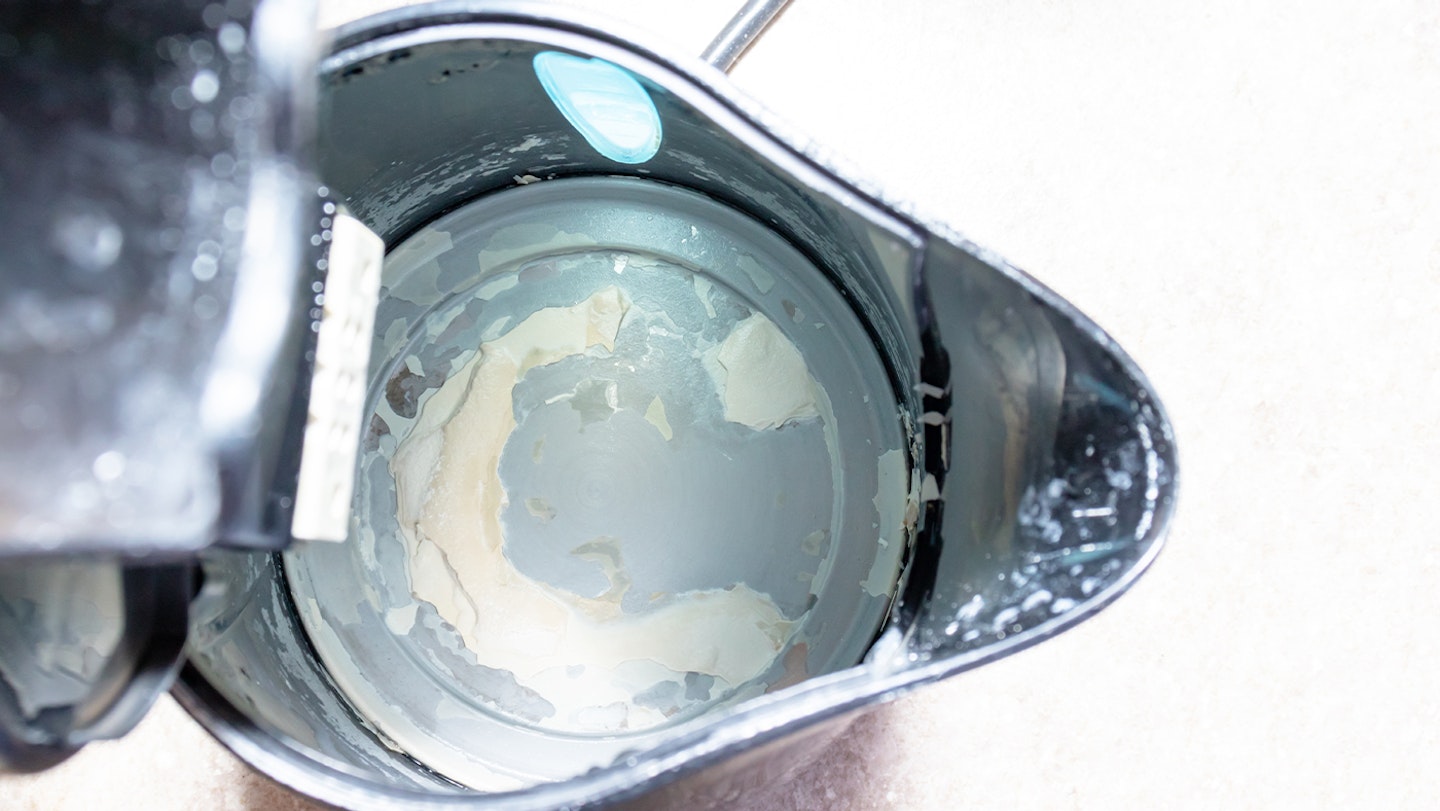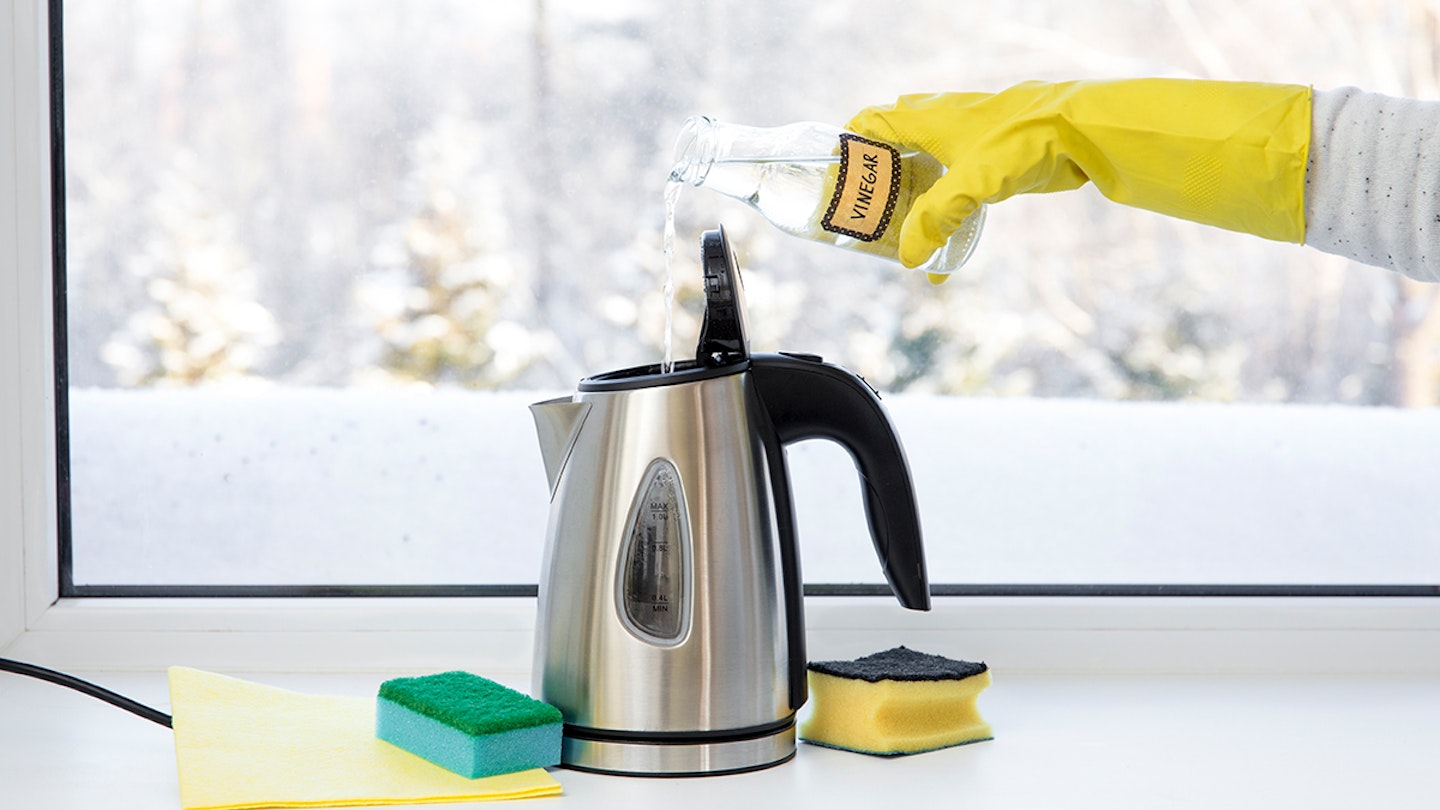If putting the kettle on for your morning cuppa is the first thing you do when you get out of bed, keeping your kitchen kettle clean is essential. Although it's probably one of the most used appliances in your kitchen, over time, limescale (insoluble calcium carbonate), a chalky-looking deposit can build up inside your kettle, so it's important you know how to descale a kettle.
If left for too long, this limescale can corrode your kettle overtime meaning it won't last you as long. To help you get the most out of your kettle to make it last as long as possible, we've consulted cleaning expert, Sarah Dempsey at MyJobQuote who has shared her expert cleaning tips to easily cleaning your kettle and get it looking good as new once again.
What is limescale?

Limescale is a hard and chalky deposit that is mostly made up of calcium carbonate (CaCO3). It’s most commonly found in kettles, pipework and showers, mainly where hot water runs. It’s more common in hard water areas and overtime, it can cause some real damage if not removed. Things like descaling solutions and water softening treatments can help.
If you have spotted limescale in your kettle it’s a good idea to remove it as soon as you can. The good news however is that limescale isn’t harmful to your health, so there’s no need to worry about ingesting it.
Why is descaling your kettle important?
Although it's not harmful to your health, a build up of limescale can cause your drinks to have a metallic taste, as well as leaving flakes of limescale in your drinks.
Limescale can also impact the efficiency of your kettle, meaning it'll take longer to boil which in the long run can affect its lifespan.
It's a good idea to clean your kettle and descale it every few months or more frequently if you notice build up or live in a hard water area. If you do live in a hard water area, you may want to also invest in a kettle that's suited to hard water.
How to descale a kettle
1. In a jug, measure out white vinegar and tap water in equal parts.
2. Pour the mixture into your kettle until it is approximately three-quarters full.
3. Bring to the boil and leave the mixture until completely cooled. Alternatively, leave the mixture in your kettle overnight.
4. Pour out the mixture and rinse repeatedly. Use a scrubbing brush with a long handle to help reach within the kettle and scrub away any limescale that still remains. It should be easily removed.
5. Refill your kettle with clean tap water. Bring to the boil again, tip out and repeat two or three times or until any lingering smell of vinegar has disappeared.
6. If any traces do still remain, repeat the process and add a teaspoon of bicarbonate of soda. This should remove any stubborn flakes that were not successfully removed the first time around.
This method can also be achieved by replacing white vinegar with other easy to find acids from around the house. Lemon juice and citric acid make good alternatives and are less unpleasant if any traces remain in your next cup of tea.
Alternatively, you can buy water descaling devices and kits that will remove any limescale build-up much more quickly than any household or natural method.
The best kettle descaling products
If natural remedies aren't working for your appliance, or you don't have time to make them, there are many kettle descaler products on the market that can help you to remove the build-up with ease.


Carry out these steps regularly, ideally every four to six weeks to keep your kettle free of limescale buildup. If you live in a part of the country that has ‘harder’ water, that is water that contains more calcium and magnesium, you will find your kettle builds up more limescale quicker than in other parts of the country where the water is softer and contains fewer of these deposits.
Natural ways to descale your kettle
How to descale your kettle with Bicarbonate of soda and water
Fill the kettle around three quarters of the way with water and add a large tablespoon of bicarbonate of soda before boiling the kettle.
Once boiled, allow the kettle to sit for an hour before pouring out the water and rinsing. Fill the kettle with water again and boil to remove any lingering bicarbonate of soda flavour and rinse.
How to descale your kettle with distilled white vinegar and water
Half fill your kettle with distilled white vinegar and half with water before boiling the kettle.
Once boiled, pour out the water before filling up your kettle with water again and boil to remove any lingering vinegar.

Clean the outside of the kettle
- When the kettle is cool, use a damp cloth that has been soaked in warm soapy water and wipe across the surface. Do not submerge if your kettle is electric as this will damage the heating element.
- If your kettle is still marked, fill a spray bottle with the same mixture of half white vinegar and half tap water and spray onto a microfibre cloth.
- Use the spritzed cloth to buff away any stubborn marks.
- If any marks still persist, leave the white vinegar solution to work on affected areas for a couple of minutes before wiping clean.
Why does limescale build up?
Limescale can build up in your appliances if you don't clean them regularly. It's caused by boiling water which contains dissolved magnesium and calcium, as the heat can cause it turn to a solid, which will spread across the kettle. Those that live in hard water areas may need to clean their kettle more often to prevent this.
Ways to avoid limescale build up
As well as giving your kettle a good clean on a weekly basis, make sure you don't leave any water standing in the kettle. Once you've emptied your kettle, there will of course be a tiny bit of water left over so to help this dry up, leave the lid of your kettle open (if you can) to help any water evaporate.
You can also purchase a kettle protector, which is essentially a little wire ball that you pop into your kettle which will attract the limescale residue from the sides of the device and all you need to do is give it a squeeze and a rinse every few weeks to get rid of the scale.
Stephanie Anthony is the Deputy Digital Editor of Yours.co.uk. Having worked across a variety of topics, from travel and food to pharmaceuticals, she also has a particular interest in mental health and wellness. She has a house full of pets with two dogs and two cats.
